1. Do not write your email to me IN CAPS. If you do so, I will print out your question and do terrible things to it.
2. Do not request a personal e-mail response. Since I get thousands of questions each month, trying to answer them all would cut deeply into my leisure time, which I value more than your current state of confusion.
3. Try to spell at least in a semi-correct fashion. If you choose to mangle the English language, expect no mercy from this quarter. You might be mocked severely.
4. Do not ask for me to send you copies of my many manuals and literature. I am not in the library business, nor do I want to spend the bulk of my day at the copy machine just because you're too lazy to ask your dealer, or look around a bit.
5. Don't bother me with truly stupid questions, like how to get 50 more horsepower for a buck and a half
6. Now that you know the rules, think carefully and have at it!
Oh yes … I’ll leave your e-mail unedited, for what it’s worth.
Have a dirt bike questions for Rick "Super Hunky" Sieman? Send an e-mail with your name, vehicle year, model and a detailed description of the problem to Don't Ask at editor@off-road.com. Don’t forget to be as complete as possible with the description of your bike and its problems.
Previous Don’t Ask Columns:
September 2011
***
SUBJECT: YZ 100 PREMIX QUESTION
I got a 1982 yz 100 and i cannot find the gas to oil ratio any help would be appreciated.
Joe Miller
Ever since the crust of the earth cooled, people have been running a 32:1 gas/oil ratio and have been quite content with the results. Might I suggest you do the same?
***
SUBJECT: TEN WORST DIRT BIKES OF ALL TIME
Ahh, the TM400 - the bike Shatner "guest-tested" and was promptly high-sided from. Not the best start for a new bike, but an honest one.
jeff
I recall that day quite vividly. Suzuki had their new model introduction and paid William “Star Trek” Shatner to be the emcee for that event. When Shatner introduced the new TM 400, he said it was built to take on the country. Indeed, the bike looked fantastic and all of the press, myself included, oooohed and aaaaaahed over just how fabulous the bike appeared. Little did we know that it was an evil handling, overpowered, ill suspended piece of crap. Shatner of course had no idea just how bad the bike was, and if he did, he might have said, “Built to take on the ambulances,” instead of built to take on the country.
***

SUBJECT: SUZUKI TM400 CYCLONE - THE MOST DANGEROUS BIKE EVER BUILT
In 1973 i lived in washington state and everyone in our neighborhood started getting dirt bikes. by 74 ten of us had bikes and would congregate at the dirt pits about 3 miles from home. as we got to be better riders our bikes got better. i personally went from a suzuki 90 to a 125 then a 185. a friend talked his parents into buying him a brand new bultaco pursang, a 250 i think it was. my friend weighed all of 140 lbs soaking wet and dident have what it took to kick start that bad boy but he lived on a hill so starting it initially wasent a problem.
he became "the man" when he showed up at the pits with his new bultaco because nobody could even come close to keeping up with him. all that changed one day when i heard about a guy that had a 73 tm 400 cyclone for sale that was within my price range. it needed a chain and both sprockets if i remember right. i showed up at the pits and several friends were there including "dan" and his pursang and for the next hour i smoked his bultaco! this was one of the best days of my life up to that point!
there was one hill that nobody had been able to climb yet and dan and i both wanted to be the first to scale it so we both bolted for it at the same time. it was about 80 ft from the bottom to the top and had a road cut into it about halfway up that ran left to right,..like a plateau. i was ahead of dans pursang when we started up so all i had to go on was onlookers that said he jumped the plateau and spun to a stop about 10 ft later. my 400 jumped the plateau and bogged a bit for 20 ft or so and then,..
well i had to rely on the same onlookers to tell me what happened next. apparently along with all the above mentioned "quirks" this bike had,..it had a problem with the throttle sticking in full twist because when the new cheng-shin grabbed a good bite it launched itself 30 feet past the top of the hill with me attatched to it like a big blue dog tick! the top of the hill was the top of the pits and it was just a huge flat field. i dont remember much between the first plateau and the nurse at tacoma general hospital.
i broke my right shoulder, right wrist and two fingers on that hand, left ankle and a hairline fracture in my left leg. the bike was bent up pretty bad too and i think i ended up selling the engine to a guy that put it on a go-cart. i think from the time i bought it to the time it broke me was 3 whole days and about 8 miles. to this day my shoulder will start throbbing 30 minutes before it starts raining.
Daryl
That particular bike put more people in the hospital than any other dirt bike that comes to mind. Huge amounts of money were spent trying to make the bike handle, and most of it was money wasted. People put good shocks on the bike, better forks, heavier flywheel weights and did all kinds of modifications, but the Suzuki TM 400 still had a mind of its own. It was only when we realized that the frame geometry itself was terrible, the swing arm flexed and twisted and the power would come on in a violent burst somewhere between three and 4000 RPM, but never in the same range each and every time.
***
SUBJECT: 10 WORST DIRT BIKES OF ALL TIME
"handled like a shopping cart loaded with bowling balls with one locked front wheel going down a flight of stairs."
lmao!
Catatonic
That is an actual quote from one of the tests I did on the TM 400 Suzuki. It truly was the kind of bike that would put fear in top professional riders. When we had someone like John DeSoto tell us that this bike would hurt you, we took his warning to heart.
***
SUBJECT: YAMAHA VINTAGE DIRT BIKE GUIDE
i have a dt250 with prefix 575-###### cant work out year model.
Mark Harvey
In all my pre-1974 publications, shop manuals, Yamaha factory manuals, I can find no machine that has a prefix on either the frame or motor that starts with a 527. In fact, I can find nothing that even starts with a 5 in the 1972 Enduro & MX models (completley different machines). Need more info, frame number? MX or Enduro? Made on the 8th planet from the sun?
***
SUBJECT: A RARE THANK YOU
Thank you so much for this info. I thought I would never figure out exactly what bike I have. A 1974 DT 360A.
David
While we get a lot of e-mail requesting identification of various Yamaha dirt bikes, we don't often get an e-mail like the above. Thank you, David, for being an ORC reader.
***
SUBJECT: '01 YAMAHA TTR 225
It seems all the years this bike was made has had the same problem. Carb problems. It will not take the fuel when first started. It will idle barely but just open the gas and it dies. I have read and read about what to do. I increased the idle and main jet sizes. That was supposed to be the fix. NOT !. If I take the carb apart and fiddle with it like changing the jets, upon first start it runs like it is supposed to, no stumble, But let it sit a day or two and I'm back to the same problem.
I have owned this bike since new. My neighbor has a 2000 model and another neighbor has a 2001 . We all have the exact same problem. If I let it sit and idle for 10 minutes or so then all of a sudden it runs great. Once I am over this starting problem then the rest of the day it runs perfect.
I am 75 years old and have been riding for years both the road on BMW's and now dirt bikes. I am also a mechanic on cars and bikes. So I know how to do the work , but I am stumped as to this continual problem.. I can't find a replacement carb. The mounting is very close. One has to practially dismantle the bike to even get to it. Maybe you have come across this problem form other riders. Hope you have an answer. Thank you for your time.
Jerry Meloy,
North Las Vegas, NV
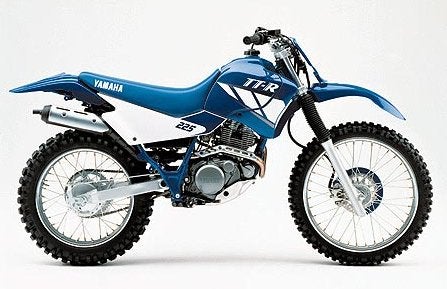
The problem you're having is classic. First, you have to check the fuel flow through the entire system. This means that you should check and see if the petcock is flowing enough gas to fill the float bowl properly. Then check the gas cap and see if it is venting enough to allow the gas to flow through the petcock. Assuming all that is okay, then you're going to have to check the pilot, or starting circuit.
From what you described, the bike is hard to start, but once it's warmed up properly after about 10 minutes of idling, then it runs okay for the rest of the day. This tells me that somewhere in your starting/idling circuit you're not getting enough fuel. While you may have changed the pilot jet, the passage way that the jets sit in may be varnished up or clogged. Then again, you might have something as simple as way too lean of a pilot jet. I'd suggest that you put in a huge pilot jet for experimenting and see if the bike starts and runs okay when cold with this big pilot jet in. That should give you the clue as to what's really wrong. Then you should experiment with pilot jets until you get one that does the job. The answer I gave you might seem simplistic, but from the way you describe the actions of the motor, it seems to be the only logical solution. Try this and please let me know.
***
SUBJECT: DID HE MAKE A MISTAKE ON SELLING HIS MAICO?
Hello, Rick.
Dave, here. Coming home from work yesterday, I was passed by a Ford P.U. w/Cal plated. In the bed were 2 vintage(?) Maicos. He had them covered with this tube-like cover that covered the tanks/seats/engines. All I saw were bars and the ass end of rear yellow fenders. He was haulin' ass; I was doing 68 and he was doing about 75 so I tried catching up. Of course every idiot cage driver got in front of me and would take 5 miles to pass a semi. He got off in Medford (Oregon). I kept on truckin'. His license plate read "MAICO 4X" or "MAICO X4". I wanted to know if you just happen to recognize anybody. I was VERY curious about the year/model of the bikes.
I don't know if I ever mentioned it, but I did some horse trading for what I was told was a '77 Maico 440. It was missing the carb. slide and cable. Plastic tank was orange until Larry Frenchs' little boy rattle-canned the tank flat black while I was at work. I popped off the primary cover and the chain was loose. That's as far as I got. I sold it at the Simi Drive in Theater swap meet for. I think, around $160. This was about '82. Did I screw up or what?
International Dave
You screwed up big time. The forks on a 1977 440 alone are worth more than the $160 you got for your bike. In 1982, that may have been what seemed like a fair price to you, but in today's world, an almost complete 440 in most any condition is worth at least $1200 to $1500. So go smack your head into a nearby wall. You deserve it.
***
SUBJECT: THE REAL SCOOP ON CZ 125s
Hello Mr Sieman,
I have a guy on Facebook telling everyone how fast his CZ 125 was, and all this "magic" he and his father did to make it fast. After reading a few more posts, and know quite a few things about CZ's over the years, I know that certain Kawasaki pistons fit CZ's, specifically 250cc pistons. But, this guy goes further to explain they also used not only a Kawasaki piston, but the rod, too! Of course we know where this is going, to top it off he divulges that a "special spacer plate" had to be machined to accommodate the longer stroke. Obviously, we have a stroker motor, probably around a 185cc, there's no "magic" this guy was just another cheater...
In one of your many articles, a long, long, time ago, you mentioned something to the affect, "that the CZ 125 was the slowest 125 ever made", do you recalled the exact "quote"?
Best Regards,
Jeff Bunn
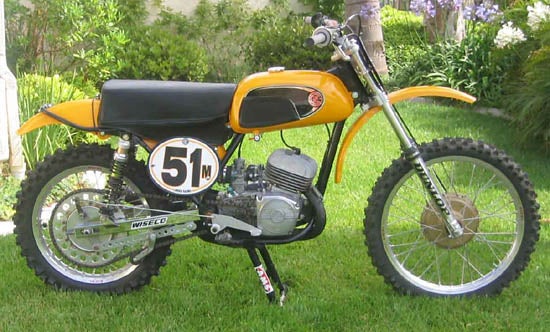
I don't recall the exact quote, but I do recall one of the testers saying this: “The shadow of that CZ125 is faster than the bike.”
***
SUBJECT: MAICO CLUTCH CONFUSION
Hello Rick.
I was looking for some Maico history when I came across your interesting article in superhunky.com.
After reading it, I thought perhaps you might have some information that might answer the question I have. The question is regarding the infamous Maico clutch.
I presently race a 440 1979 model which I bought recently. Clutch slipping has come to light, and I am now quite adept at disassembly and reassembly!
What I have discovered is that my machine has a 250 clutch fitted, evident by the primary reduction ratio. The 440 ought to be 21:39 but on my bike an 18:41 ratio is the case. This ratio difference equates to 22% more torque being experinced by the clutch, which is probably a big factor leading to slippage.
I was looking into the history to see if I could ascertain the design difference in the primary drive ratios. I wondered was it purely to compensate for higher engine speed of the 250, so that a similar final drive to the 440 could be used, (well almost, one tooth different on the front sprocket), or was this primary drive reduction difference in order to ensure the clutch was working within its design parameters, i.e. to ensure the scenario I am now experiencing, didn't take place?
I suppose unless a direct contact with a Maico designer was established, I might never know the answer.
Thanks,
Neill
This may come as a real shock to you, but here's the actual story behind the clutch on the Maicos. Frank Cooper, the distributor for Maicos, felt that the small clutch that came on all the bikes of that era had a pull that was way too hard. Lots of riders complained about the amount of force necessary to use the clutch, so Frank contacted the factory and had them bring out a new version called the large clutch. While the large clutch had a much easier pull, it was also prone to slipping and couldn't take anywhere near the abuse that the small clutch could. All of the sponsored racers used the small clutch, and you should too.
***
SUBJECT: OLD SQUARE BARREL 360 MAICOS
Hi, Rick
I recently purchased a 1968 Maico 360 X4 square barrel, it has a fiber glass tank and an up pipe. I have spent a considerable amount of time trying to find any info on this bike , with very little luck so far. I have heard that you have a vast knowledge of the Maico dirt bikes and was hopeing you might know where I might get info (such as pics or production #s) on this fine machine.
NO NAME
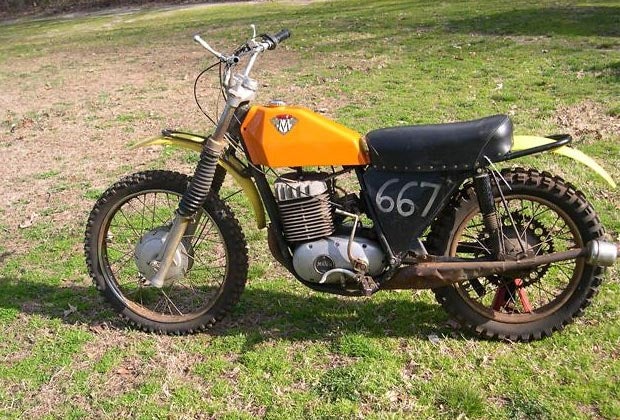
I don't have any specs on the 360 in my files, and didn’t start working on Dirt Bike magazine until 1971. However, here are a few photos that might be helpful. You're going to have to rummage through the bookstores and find an old manual somewhere.
***
SUBJECT: NOT A FAN
Hey jerk
I got a 2010 Honda CRF 450 and I got it for a good price. The motor was just rebuilt all the way and I only paid $4500 for it. I rode it and it was scary fast. So where do you get off raggin on this bike all the time? And you keep saying that it's a hand grenade and will blow up on me, well I rode it four times in the last month and it still runs perfect. So you can take your opinion and put it where the sun don't shine. I don't think you know anything about the newer generation of bikes. You are stuck in the past and you don't know **** about the new bikes. That's my two cents.
Gary
Bakersfield, CA
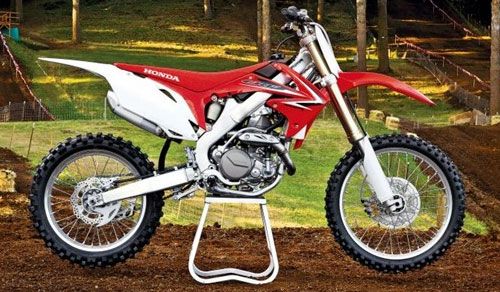
Gary, my boy. Let's see now. You bought a 2010 Honda that was just completely rebuilt. Did you ever wonder why a one-year-old bike needed a complete rebuild? It's because it broke. And your 450 will also break fairly soon if you are to believe the owner’s manual. Yes, right there in the owner’s manual, it tells you that after about 15 hours of operation you will be ready for a top and rebuild. When you go to the dealer to have it done and he tells you it's gonna be about $3000, you might reconsider just how good your deal was. I stick by my opinions. By the way, I've had the opportunity to be to ride a goodly number of new bikes. Yes, they are powerful, but more importantly, they are fragile and demand constant expensive maintenance. If you are an expert mechanic and can do the work yourself, that's fine. But the typical rider with a new generation bike isn't capable of doing something as basic as adjusting the valves. I hope you're happy with your new hand grenade.
***
SHAMELESS PLUG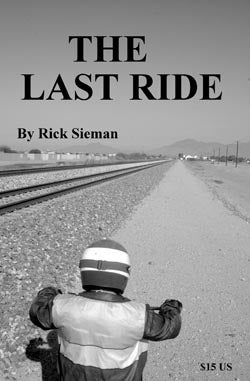 My new book, THE LAST RIDE, is at now out. It's fiction and starts in 1969, when an 18-year-old kid just out of high school gets a chance to ride his Yamaha 250 DT1 from Pennsylvania to Los Angeles … all off-road.
My new book, THE LAST RIDE, is at now out. It's fiction and starts in 1969, when an 18-year-old kid just out of high school gets a chance to ride his Yamaha 250 DT1 from Pennsylvania to Los Angeles … all off-road.
His adventures are truly amazing. The book then jumps 40+ years where the same person, now in his 60s, wants to get that old Yamaha back in his possession and return it home by riding it all off-road across the country again. The book is $15 plus $2.75 for mail anywhere in the US (or $5 for Priority Rush mail) and for more information, the email is: superhunky@gmail.com.

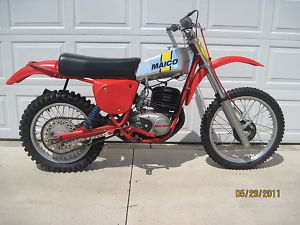
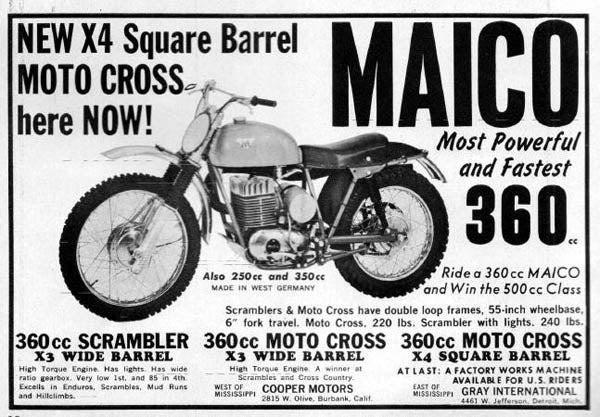

 Your Privacy Choices
Your Privacy Choices